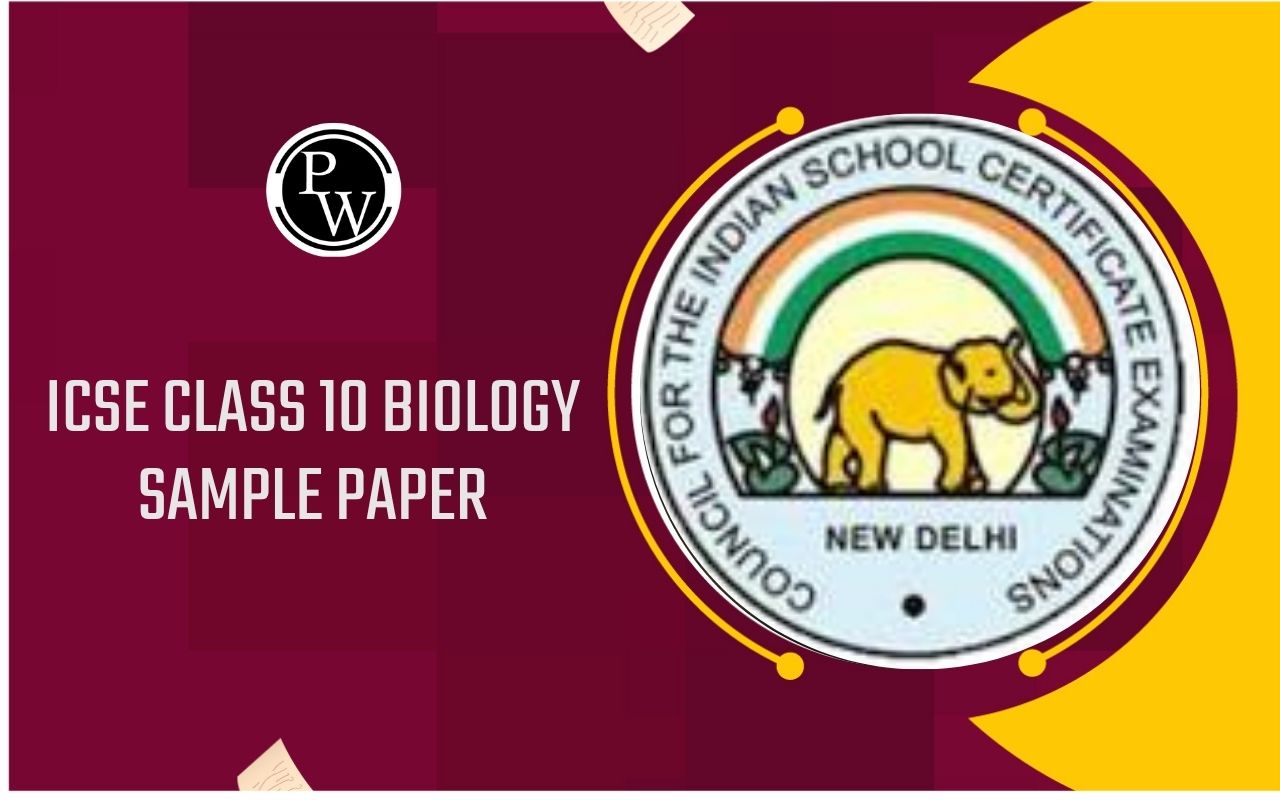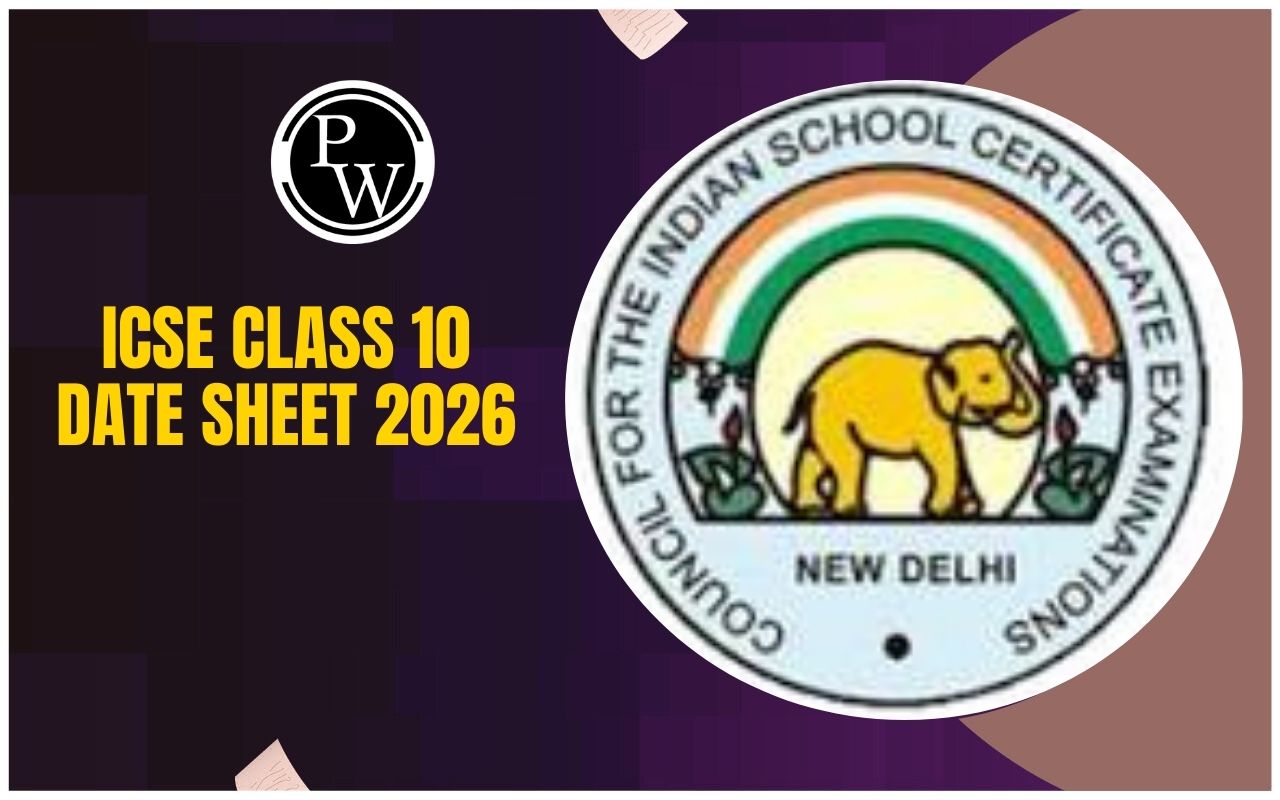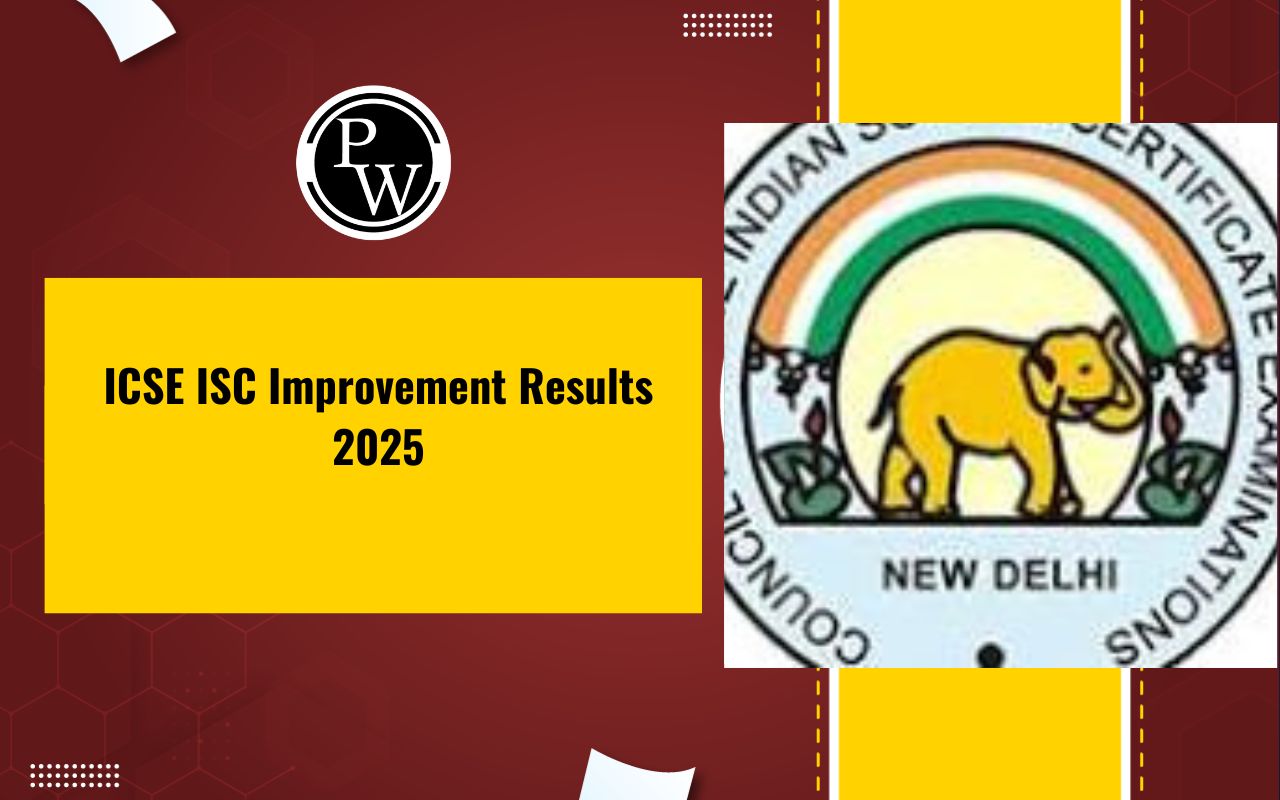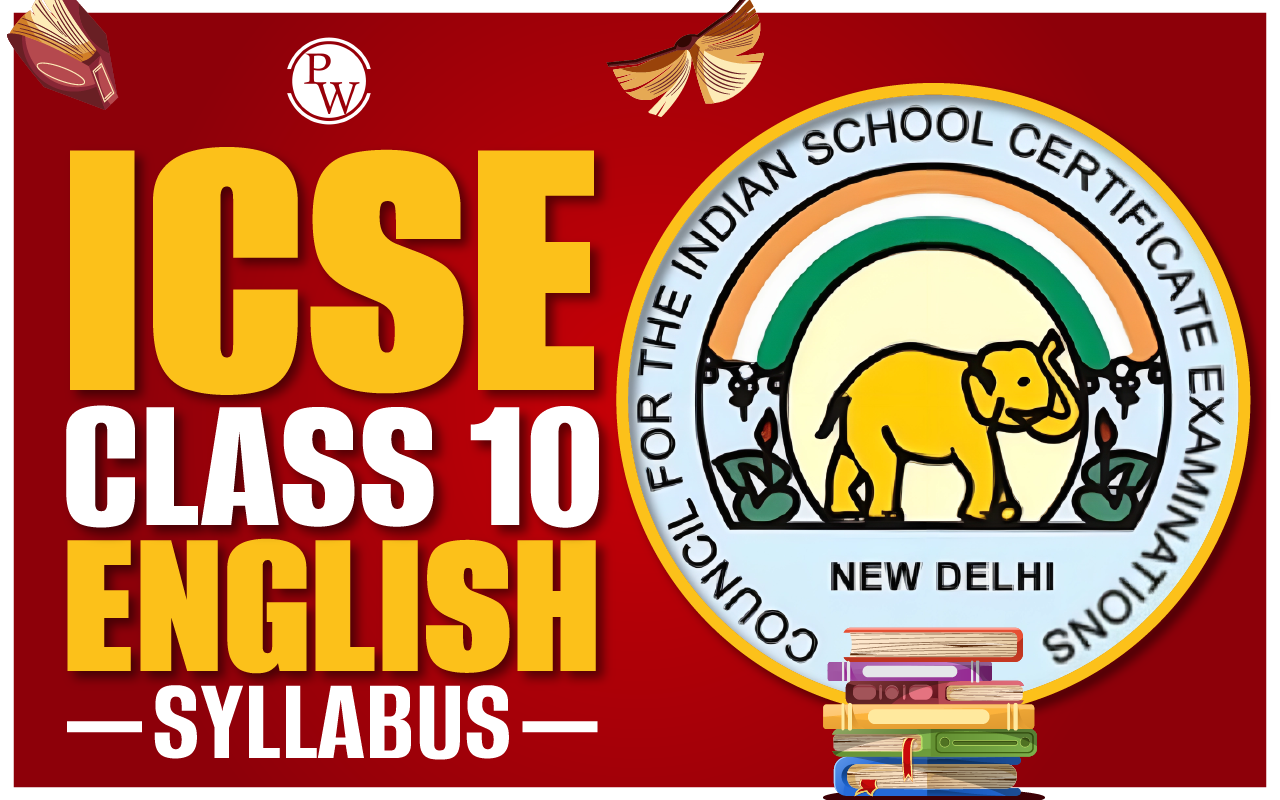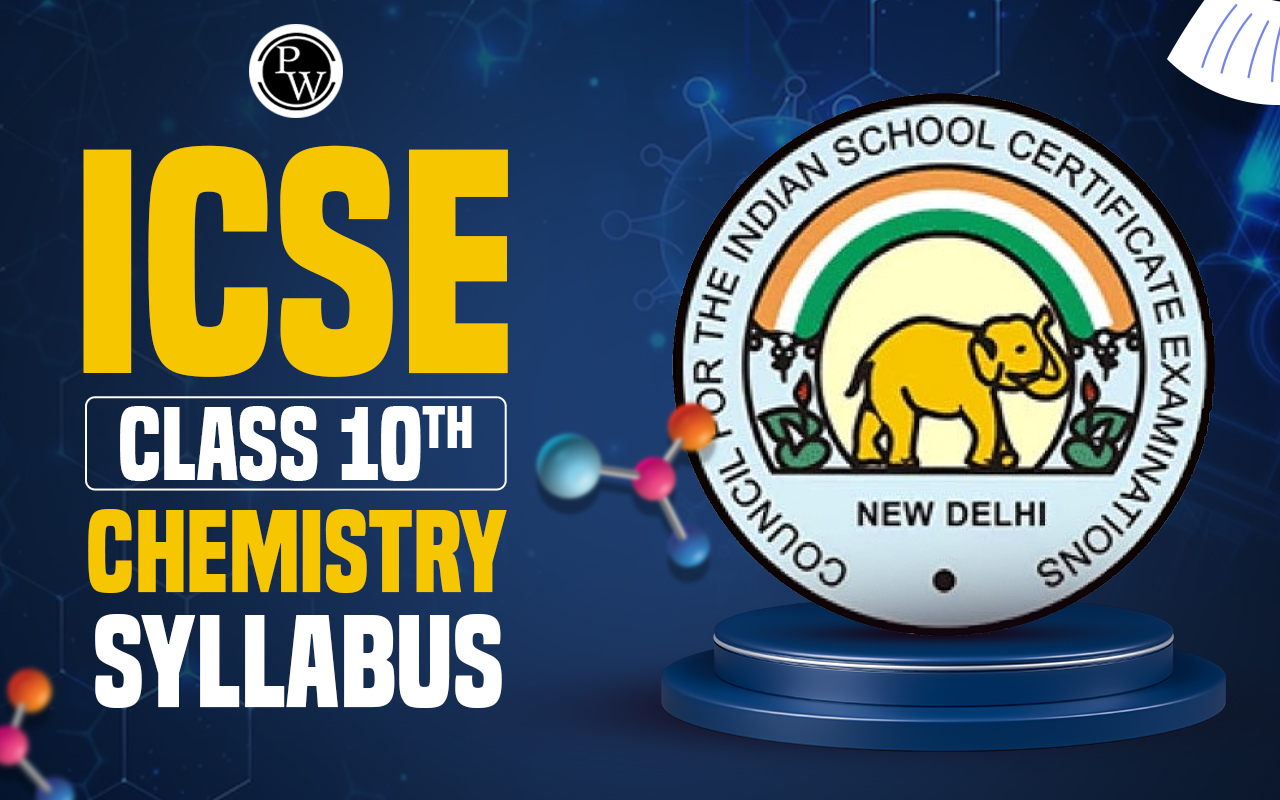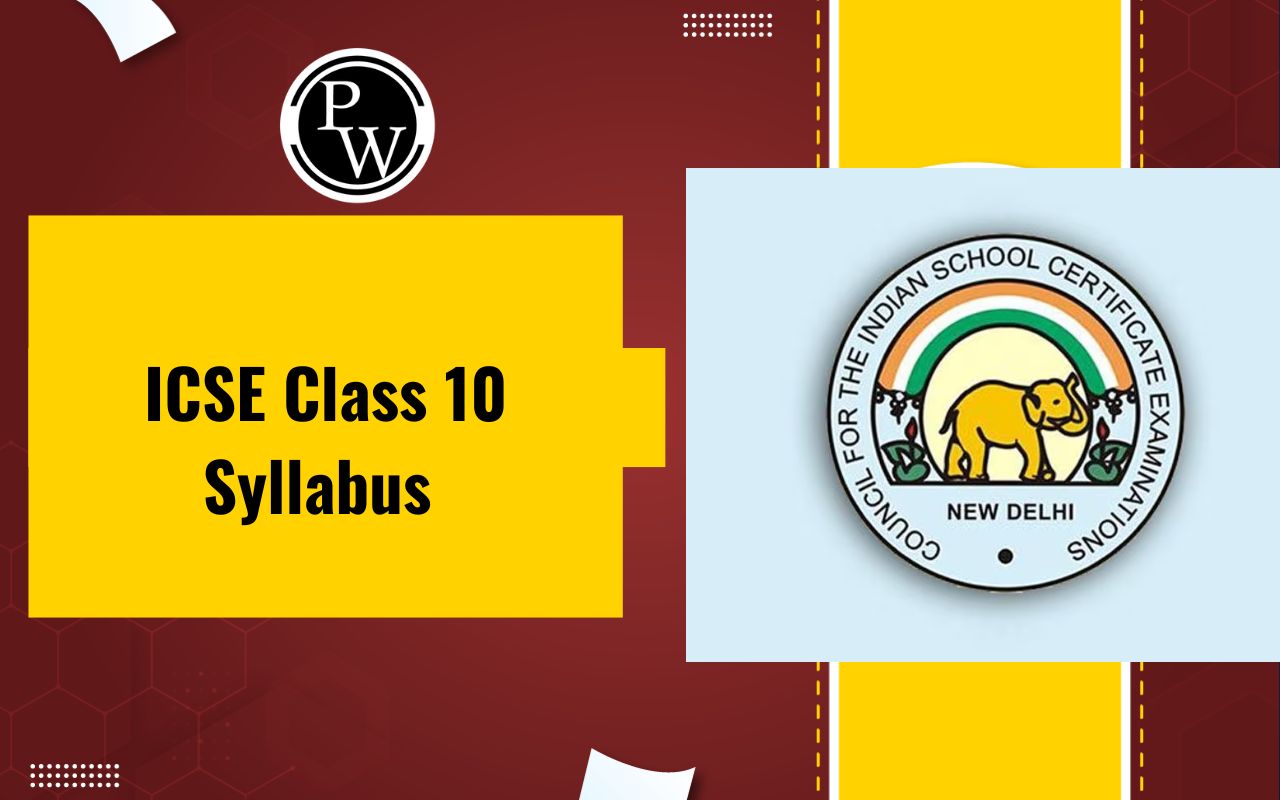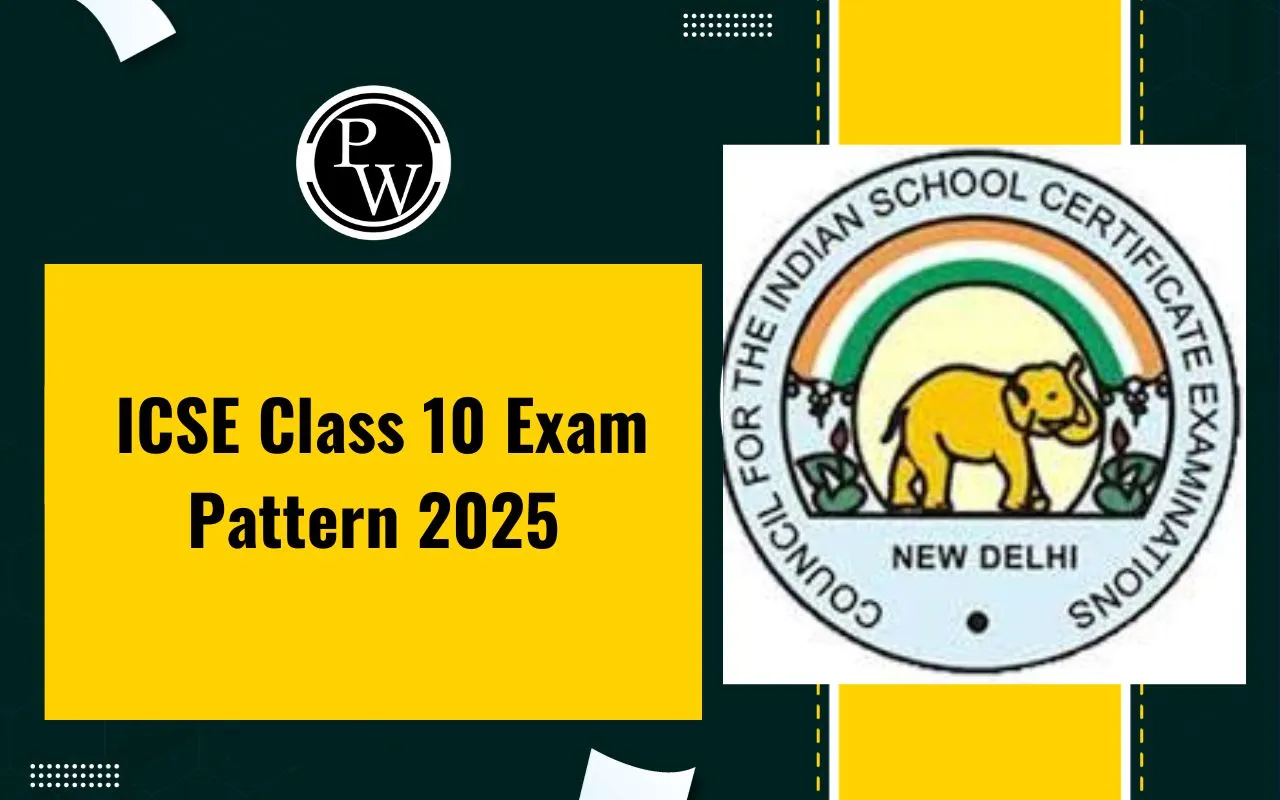
ICSE Class 10 Maths Syllabus: The ICSE Class 10 Mathematics syllabus for the academic year 2025-26 released by the Council for the Indian School Certificate Examinations (CISCE) provides a comprehensive outline of the topics that students are expected to study.
This syllabus is a important resource for both students and educators, detailing the necessary concepts and skills to be covered throughout the academic year.The complete syllabus is available for download in PDF format, providing a valuable resource for students academic success.
ICSE Class 10 Maths Syllabus 2025-26 Overview
When studying for Class 10 maths, students can use the latest maths syllabus for Class 10 ICSE 2025-26 to get familiar with the topics and chapters in the course structure. Following the detailed syllabus makes it easier to score well in the examination.The maths syllabus for Class 10 ICSE covers important topics such as Commercial Maths, Algebra, Geometry, and Trigonometry. On this page, students can find the ICSE Class 10 Mathematics Syllabus, organized chapter-wise with further details on each topic. Check the table below for more details:
| ICSE Class 10 Maths Syllabus 2025-26 | |
| Unit No. | Topics |
| 1. | Commercial Maths |
| 2. | Algebra |
| 3. | Geometry |
| 4. | Algebra |
| 5. | Geometry |
| 6. | Mensuration |
| 7. | Trigonometry |
| 8. | Statistics |
| 9. | Probability |
ICSE Class 10 Maths Syllabus 2025-26 Exam Pattern
For those appearing in the ICSE Class 10 board exams, it is important to be familiar with both the ICSE Maths Syllabus 2025-26 and the question paper design. Take note of the key highlights of the ICSE Class 10 Maths Question paper:- The exam consists of one two-and-a-half-hour paper carrying 80 points and an internal assessment worth 20 points.
- The paper is divided into two sections: Section I (40 points) and Section II (40 points).
- Section I comprises mandatory short answer questions.
- In Section II, candidates need to answer four out of seven questions.
ICSE Class 10 Chemistry Syllabus
ICSE Class 10 Maths Syllabus 2025-26 Aim
The ICSE Class 10 Maths Syllabus 2025-26 aims:- To gain knowledge and grasp the meanings of terms, symbols, concepts, principles, processes, proofs, and more in mathematics.
- To build an understanding of mathematical concepts and how they can be applied in future studies related to mathematics and science.
- To acquire the ability to use mathematical knowledge for solving practical problems in everyday life.
- To cultivate the essential skills needed to operate modern technological devices like calculators and computers in real-life scenarios.
- To enhance drawing abilities and the skills to interpret tables, charts, and graphs.
- To foster an interest and curiosity in the subject of mathematics.
ICSE Class 10 Maths Syllabus 2025-26 Chapter-Wise
Mathematics is a subject where students can score well in the Class 10 Curriculum. Yet, some students struggle due to the extensive calculations involved. The key to achieving a good score in Mathematics is consistent practice nothing else. Students should thoroughly study all the topics outlined in the ICSE Class 10 Maths Syllabus and repeatedly review the concepts. The topics and subjects covered in the ICSE Class 10 Maths Syllabus 2025-26 are these:ICSE Class 10 Physics Syllabus
Chapter 1: Commercial Mathematics
(i) Goods and Services Tax (GST) Calculating tax, which includes issues related to discounts, list price, profit, loss, basic/cost price, and inverse scenarios. Candidates are expected to determine the consumer's final payment after settling State Goods and Service Tax (SGST) and Central Goods and Service Tax (CGST) at the prevailing rates for different items. Problems involving corresponding inverse cases are also part of the assessment. (ii) Banking Recurring Deposit Accounts: Computing interest and maturity value using the formula: MV = P × n + I (iii) Shares and Dividends (a) Face/Nominal Value, Market Value, Dividend, Rate of Dividend, Premium. (b) Formulas- Income = number of shares × rate of dividend × FV.
- Return = (Income / Investment) × 100.
Chapter 2: Algebra
- (i) Linear Inequalities
- Solving linear inequalities in one variable for x in N , W , Z , R .
- Solution expressed algebraically and presented in set notation.
- Illustration of the solution on the number line.
- (ii) Quadratic Equations in one variable
- (a) Nature of roots:
- Two distinct real roots
- Two equal real roots
- No real roots
- (b) Solving quadratic equations by:
- Factorization
- Using formulas
- (c) Solving simple quadratic equation problems.
- (iii) Ratio and Proportion
- (a) Proportion, continued proportion, mean proportion.
- (b) Properties of componendo, dividendo, alternendo, invertendo, and their combinations.
- (c) Direct simple applications on proportions only.
- (iv) Factorization of polynomials
- (a) Factor Theorem.
- (b) Remainder Theorem.
- (c) Complete factorization of a polynomial after obtaining one factor by the factor theorem.
- (v) Matrices
- (a) Order of a matrix. Row and column matrices.
- (b) Compatibility for addition and multiplication.
- (c) Null and identity matrices.
- (d) Addition and subtraction of 2x2 matrices.
- (e) Multiplication of a 2x2 matrix by a non-zero rational number or another matrix.
- (vi) Arithmetic and Geometric Progression
- Finding their general term.
- Finding the sum of their first ‘n’ terms.
- Simple applications.
- (vii) Coordinate Geometry
- (a) Reflection
- Reflection of a point in a line ( x =0, y =0, x = a , y = a , and the origin).
- Reflection of a point in the origin.
- Invariant points.
- (b) Coordinates expressed as ( x , y ), section formula, midpoint formula, concept of slope, equation of a line, various forms of straight lines.
- (i) Section and midpoint formula (internal section only, coordinates of the centroid of a triangle included).
- (ii) Equation of a line:
- Slope–intercept form y = mx + c
- Two-point form ( y − y 1)= m ( x − x 1)
- Geometric understanding of ‘m’ as slope/gradient/tanθ where θ is the angle the line makes with the positive direction of the x-axis.
- Geometric understanding of ‘c’ as the y-intercept/ordinate of the point where the line intercepts the y-axis/point on the line where x =0.
- Conditions for two lines to be parallel or perpendicular.
- Simple applications of all the above.
Chapter 3: Geometry
(a) Similarity Similarity, conditions of similar triangles. (i) As a size transformation. (ii) Comparison with congruency, keyword being proportionality. (iii) Three conditions: SSS, SAS, AA. Simple applications (proof not included). (iv) Applications of Basic Proportionality Theorem. (v) Areas of similar triangles are proportional to the squares of corresponding sides. (vi) Direct applications based on the above, including applications to maps and models. (b) Loci Loci: Definition, meaning, Theorems, and constructions based on Loci. (i) The locus of a point at a fixed distance from a fixed point is a circle with the fixed point as the center and a fixed distance as the radius. (ii) The locus of a point equidistant from two intersecting lines is the bisector of the angles between the lines. (iii) The locus of a point equidistant from two given points is the perpendicular bisector of the line joining the points. Proofs not required. (c) Circles (i) Angle Properties- The angle that an arc of a circle subtends at the center is double that which it subtends at any point on the remaining part of the circle.
- Angles in the same segment of a circle are equal (without proof).
- The angle in a semi-circle is a right angle.
- Opposite angles of a cyclic quadrilateral are supplementary.
- The exterior angle of a cyclic quadrilateral is equal to the opposite interior angle (without proof).
- The tangent at any point of a circle and the radius through the point are perpendicular to each other.
- If two circles touch, the point of contact lies on the straight line joining their centers.
- From any point outside a circle, two tangents can be drawn, and they are equal in length.
- If two chords intersect internally or externally, then the product of the lengths of the segments is equal.
- If a chord and a tangent intersect externally, then the product of the lengths of segments of the chord is equal to the square of the length of the tangent from the point of contact to the point of intersection.
- If a line touches a circle and from the point of contact, a chord is drawn, the angles between the tangent and the chord are respectively equal to the angles in the corresponding alternate segments. Note: Proofs of the theorems given above are to be taught unless specified otherwise.
- (a) Construction of tangents to a circle from an external point.
- (b) Circumscribing and inscribing a circle on a triangle and a regular hexagon.
Chapter 4: Mensuration
Study of the area and volume of three-dimensional shapes, specifically the right circular cylinder, right circular cone, and sphere. Topics include the calculation of both total surface and curved surface area, as well as volume. Practical problems involving real-world scenarios, such as cost calculations, inner and outer volume, and the melting and recasting method to determine the volume or surface area of a new solid, are also covered. The combination of different solids is included in the discussion. Note: Problems related to frustums are not part of the curriculum.Chapter 5: Trigonometry
(a) Utilizing identities to solve or prove simple algebraic trigonometric expressions:- 1sin2 A +cos2 A =1
- 1+tan2 A =sec2 A
- 1+cot2 A =csc2 A where 0≤ A ≤90 ∘
Chapter 6: Statistics
Introduction to basic statistical concepts, including mean, median, mode, histograms, and ogive. (a) Computation of:- Measures of central tendency: mean, median, and mode for both raw and arranged data.
- Mean by all three methods: direct (Σ f ), short-cut (Σ f Σ fx ), and step-deviation (Σ f ( x − A ), where A is the assumed mean).
- (b) Graphical representation using histograms and less than ogive. Finding the mode from the histogram, as well as the upper quartile, lower quartile, and median from the ogive. Calculation of interquartile range.
Chapter 7: Probability
Covering concepts such as random experiments, sample space, events, and the definition of probability. Simple problems related to single events are discussed.ICSE Class 10 Maths Syllabus 2025-26 Practical Work
The teacher requires a minimum of two assignments. Here are some suggested tasks:- Compare news coverage of different topics in newspapers.
- Conduct a survey on various types of bank accounts and the interest rates they offer.
- Plan a home budget.
- Survey your local area to study transportation methods, prices of essential goods, and favorite sports. Represent the data using a bar graph or histogram and estimate the mode.
- Use a newspaper to study and report on shares and dividends.
- Set up a dropper with ink, positioned vertically 20 cm above a horizontally placed sheet of plain paper. Release one ink drop, observe any patterns on the paper. Vary the vertical distance and repeat the experiment to discover any relationships between the height and the observed ink drop patterns.
- Given three vertical sticks (size of a pencil) attached to a horizontal board and discs of varying sizes with holes (like a doughnut), start with one disc on stick A. Transfer it to another stick (B or C) to complete one move. Experiment with two discs placed in A, one below and one above, and transfer them one at a time to B or C to achieve a similar arrangement. Determine the number of moves required. Repeat the process with more discs (n = 1, 2, 3, etc.) and generalize your findings.
- The board features gaps for marbles, with red on one side and blue on the other. Begin with a pair and switch their positions one move at a time. Each move covers three holes. Experiment with two pairs (n=2) and beyond. Determine the connection between n and m.
- Take a square paper measuring 10 cm on each side. Remove four small squares from its corners, then fold the paper at the cuts to create an open box. Determine the square size for the cut corners to maximize the open box's volume.
- For the open box experiment, use four sets of marbles (each set with identical-sized marbles) and some water. Place marbles and water in the box and explore whether larger or smaller marbles occupy more space.
- An unconventional artist claims that the best paintings have an area equal to their perimeter (numerically). Find, in integers only, the dimensions a rectangle must have for its area and perimeter to be the same (Note: only two such rectangles exist).
- Discover the center of a circle by constructing it using only a 60-30 setsquare and a pencil.
- Explore various types of "cryptarithm."
ICSE Class 10 Maths Syllabus 2025-26 PDF Download Link
The PDF of the ICSE Class 10 Maths Syllabus for the academic year 2025-26 can now be downloaded from the official CISCE website. Students preparing for the upcoming Class 10 board exam can download the ICSE Class 10 Maths Syllabus and start their preparations. To make it easy for students, we've provided a direct link to download the ICSE Class 10 Maths Syllabus 2025-26 PDF below:
Do you need help with your homework or preparing for exams?
Study without using the internet
ICSE Class 10 Maths Syllabus FAQs
What are the main sections covered in the ICSE Class 10 Maths syllabus?
The syllabus is divided into two sections: Section I covers Commercial Mathematics, Algebra, Geometry, Mensuration, Trigonometry, Statistics, and Probability. Section II offers flexibility with seven choices, answer four.
Is there any change in the ICSE Class 10 Maths syllabus for 2025-26?
No major changes have been announced for the 2025-26 syllabus. However, it's always recommended to check the official ICSE website for any updates.
What are some strategies for preparing for the ICSE Class 10 Maths exam?
Focus on understanding concepts, practice solving problems regularly, manage time effectively during exams, and don't hesitate to seek help from teachers or tutors if needed.
Is it possible to score high marks in ICSE Class 10 Maths with consistent effort?
Absolutely! With dedication, consistent practice, and the right approach, anyone can achieve a high score in the ICSE Class 10 Maths exam.
Talk to a counsellorHave doubts? Our support team will be happy to assist you!

Check out these Related Articles
Free Learning Resources
PW Books
Notes (Class 10-12)
PW Study Materials
Notes (Class 6-9)
Ncert Solutions
Govt Exams
Class 6th to 12th Online Courses
Govt Job Exams Courses
UPSC Coaching
Defence Exam Coaching
Gate Exam Coaching
Other Exams
Know about Physics Wallah
Physics Wallah is an Indian edtech platform that provides accessible & comprehensive learning experiences to students from Class 6th to postgraduate level. We also provide extensive NCERT solutions, sample paper, NEET, JEE Mains, BITSAT previous year papers & more such resources to students. Physics Wallah also caters to over 3.5 million registered students and over 78 lakh+ Youtube subscribers with 4.8 rating on its app.
We Stand Out because
We provide students with intensive courses with India’s qualified & experienced faculties & mentors. PW strives to make the learning experience comprehensive and accessible for students of all sections of society. We believe in empowering every single student who couldn't dream of a good career in engineering and medical field earlier.
Our Key Focus Areas
Physics Wallah's main focus is to make the learning experience as economical as possible for all students. With our affordable courses like Lakshya, Udaan and Arjuna and many others, we have been able to provide a platform for lakhs of aspirants. From providing Chemistry, Maths, Physics formula to giving e-books of eminent authors like RD Sharma, RS Aggarwal and Lakhmir Singh, PW focuses on every single student's need for preparation.
What Makes Us Different
Physics Wallah strives to develop a comprehensive pedagogical structure for students, where they get a state-of-the-art learning experience with study material and resources. Apart from catering students preparing for JEE Mains and NEET, PW also provides study material for each state board like Uttar Pradesh, Bihar, and others
Copyright © 2025 Physicswallah Limited All rights reserved.
Get App
